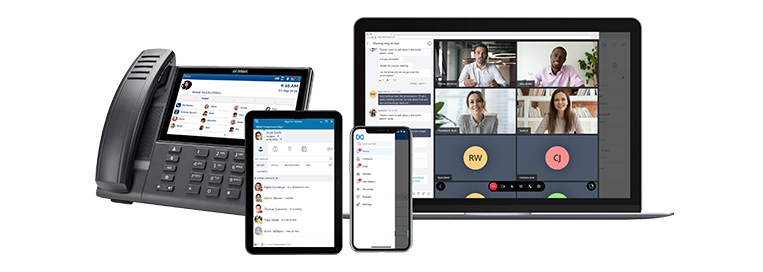 |
Author: James Singleton Partner Manager & Product Specialist, JT Enterprise |
Flexibility and agility are two of the most important characteristics for any business, especially as the routine nature of working, the how and when, continues to evolve.
While the events of the past year have been tough, they’ve also given us a glimpse into the future of the workplace. Many organisations have seen that their teams don’t necessarily need to be centralised in one office space — not if they have the right virtual tools.
It’s time to re-imagine the working arrangements required for your organisation today to prepare for tomorrow and beyond.

Remote, office or multi-office — what are the benefits?
Remote working
![]() Now that the nature of work is changing, helped in part by the advances in technology and in embracing change. Studies have shown that on average, remote workers are productive and collaborative, innovative and more engaged. Likewise, companies that implement remote working are more attractive to employees (aftercollege.com), particularly when it comes to younger workers.
Now that the nature of work is changing, helped in part by the advances in technology and in embracing change. Studies have shown that on average, remote workers are productive and collaborative, innovative and more engaged. Likewise, companies that implement remote working are more attractive to employees (aftercollege.com), particularly when it comes to younger workers.
Working from home enables employees to skip lengthy commutes and customise their workday to suit their needs. Working remotely can be highly motivating for staff and, when handled appropriately, helps deliver a greater work-life balance.
Office working
![]() The office has long been a staple of the working world, and with good reason. In an office environment, collaboration comes naturally — a stark contrast to the sometimes problematic task of weaving together multiple remote worker schedules.
The office has long been a staple of the working world, and with good reason. In an office environment, collaboration comes naturally — a stark contrast to the sometimes problematic task of weaving together multiple remote worker schedules.
Multi-office working
![]() The growth of flexible, “co-working” hubs has created a third option for teams to consider: multi-office or satellite working.
The growth of flexible, “co-working” hubs has created a third option for teams to consider: multi-office or satellite working.
By harnessing co-working spaces, businesses can essentially do away with their traditional “headquarters” and instead have several smaller offices that people are free to work from at their choosing. This provides a space for employees to meet, work together when necessary and maintain that feeling of being one cohesive team.

When planning the year ahead, flexibility is key
Different employees require different working arrangements at different times. Therefore, it may be more prudent to invest in tools that allow your business to ramp up its office or remote working capacity as and when needed.
Rather than committing to one particular form of working, organisations should instead focus their efforts on flexibility; ensuring that intercommunication methods are just as effective when employees are working remotely as when they are in the office.
Thankfully, there are solutions available to do exactly that.
Increase operational flexibility with Mitel MiCloud Flex
Mitel Micloud Flex delivers a full Unified Communications solution — incorporating chat, video calling, telephony and screen-sharing. With a single app, Mitel Flex allows your team to use the same communication tools across any device, regardless of where they choose to work from.
With Mitel MiCloud Flex, users can be anywhere in the world and still use the cloud phone system. This ensures you will never miss a call, and that all users, no matter their location or device, will have access to the same features and functionality.

Future-proof your team with JT's Unified Communications Solutions
With a robust feature set and the latest Voice over the Internet Protocols, MiCloud Flex and Cisco Webex are the collaboration tools your team requires to prepare your office for the future, whatever that future might look like.
As the Channel Islands’ leading provider for Mitel & Cisco, JT has proven experience delivering communication solutions for varied business sizes, bespoke to a variety of requirements. Also supplying, where required, a suite of intelligent Mitel video and audio hardware, we can ensure a complete, collaborative experience in and out of the office for your teams.
For a demonstration of Mitel Flex or Cisco Webex capabilities, or to get started using a service, contact the JT Enterprise Team today.

